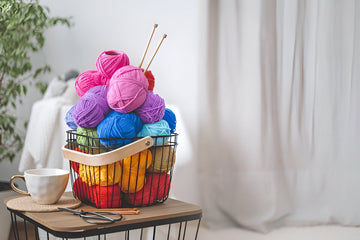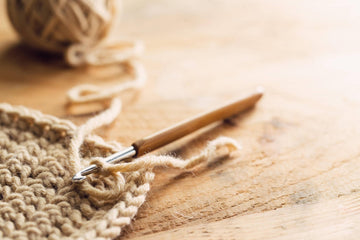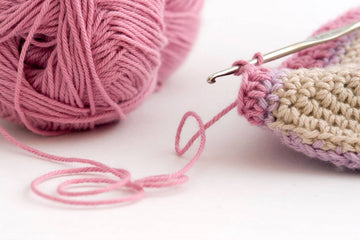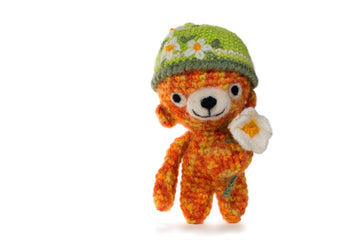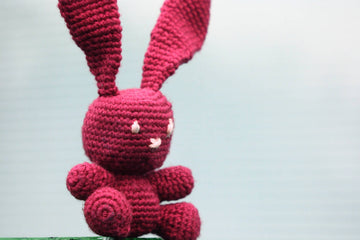Introduction: Why Choosing the Right Yarn Matters
Crocheting is a rewarding and creative hobby, but as a beginner, one of the most important decisions you’ll make is choosing the right yarn. The type of yarn you select can significantly impact the outcome of your project, from its appearance and texture to its durability and ease of use. With so many options available, it can feel overwhelming to know where to start. This guide will walk you through everything you need to know about selecting the perfect yarn for your crochet projects, ensuring your creations turn out beautifully every time.
Table of Contents
| Section | Subsection |
| 1. Introduction | Why Choosing the Right Yarn Matters |
| 2. Understanding Yarn Basics | What is Yarn Made Of? Yarn Weight Categories Yarn Texture and Ply |
| 3. Factors to Consider When Choosing Yarn | Project Type Skill Level Fiber Content Color and Dye Lot Budget and Availability |
| 4. Popular Yarn Types for Beginners | Acrylic Yarn Cotton Yarn Wool Yarn Blended Yarns |
| 5. Tools and Accessories for Crochet Beginners | Crochet Hooks Stitch Markers Yarn Needles Storage Solutions |
| 6. Step-by-Step Guide to Choosing Yarn | Step 1: Define Your Project Step 2: Match Yarn Weight to Project Step 3: Select the Right Fiber Step 4: Consider Color and Texture Step 5: Test the Yarn |
| 7. Common Mistakes to Avoid | Ignoring Yarn Labels Choosing the Wrong Weight Overlooking Fiber Allergies Not Buying Enough Yarn |
| 8. FAQs | What is the best yarn for beginners? How do I know which yarn weight to use? Can I substitute one yarn for another? How much yarn do I need for a project? What is the difference between natural and synthetic yarn? |
| 9. Conclusion | Final Thoughts on Choosing the Right Yarn |
Understanding Yarn Basics
What is Yarn Made Of?
Yarn can be made from natural fibers like wool, cotton, and silk, or synthetic fibers like acrylic and polyester. Each type of fiber has unique properties that affect the yarn’s texture, durability, and care requirements.
Yarn Weight Categories
Yarn weight refers to the thickness of the yarn strand, which determines the gauge and drape of your finished project. Common categories include lace, fingering, sport, worsted, and bulky.
Yarn Texture and Ply
The texture of yarn can range from smooth to fluffy, while ply refers to the number of strands twisted together. These factors influence how the yarn feels and works up in your project.
Factors to Consider When Choosing Yarn
Project Type
Different projects require different types of yarn. For example, a lightweight shawl might call for lace-weight yarn, while a cozy blanket would need a bulkier option.
Skill Level
Beginners should opt for yarns that are easy to work with, such as medium-weight acrylic or cotton yarns.
Fiber Content
Consider the properties of the fiber. Wool is warm and elastic, cotton is cool and durable, and acrylic is versatile and affordable.
Color and Dye Lot
Color can dramatically affect the look of your project. Always check the dye lot to ensure consistency in color.
Budget and Availability
Choose yarn that fits your budget and is readily available, especially if you need to buy more for larger projects.
Popular Yarn Types for Beginners
Acrylic Yarn
Acrylic yarn is affordable, durable, and comes in a wide range of colors, making it ideal for beginners.

Cotton Yarn
Cotton yarn is soft, breathable, and perfect for projects like dishcloths and summer garments.

Wool Yarn
Wool yarn is warm and elastic, great for winter accessories and garments.

Blended Yarns
Blended yarns combine the best qualities of different fibers, offering versatility and ease of use.
Tools and Accessories for Crochet Beginners
Crochet Hooks
Choose hooks that feel comfortable in your hand and match the size recommended for your yarn.
Stitch Markers
Stitch markers help you keep track of your progress, especially in complex patterns.

Yarn Needles
Yarn needles are essential for weaving in ends and sewing pieces together.

Storage Solutions
Keep your yarn and tools organized with storage bags or boxes to prevent tangling and damage.
Step-by-Step Guide to Choosing Yarn
- Step 1: Define Your Project
Determine the type of project you want to create, such as a scarf, blanket, or amigurumi.
- Step 2: Match Yarn Weight to Project
Refer to your pattern or project requirements to select the appropriate yarn weight.
- Step 3: Select the Right Fiber
Choose a fiber that suits the purpose and season of your project.
- Step 4: Consider Color and Texture
Pick a color and texture that align with your vision for the finished piece.
- Step 5: Test the Yarn
If possible, feel the yarn and work a small swatch to ensure it meets your expectations.
Common Mistakes to Avoid
Ignoring Yarn Labels
Yarn labels provide crucial information about weight, fiber content, and care instructions.
Choosing the Wrong Weight
Using the wrong yarn weight can result in a project that’s too tight, too loose, or the wrong size.
Overlooking Fiber Allergies
Be mindful of allergies when selecting yarn, especially if the project is for someone else.
Not Buying Enough Yarn
Running out of yarn mid-project can be frustrating. Always buy extra to avoid mismatched dye lots.
FAQs
What is the best yarn for beginners?
Acrylic yarn is often recommended for beginners due to its affordability and ease of use.
How do I know which yarn weight to use?
Check your crochet pattern for recommended yarn weight or use a yarn weight chart as a guide.
Can I substitute one yarn for another?
Yes, but ensure the substitute yarn has a similar weight and fiber content to achieve the desired result.
How much yarn do I need for a project?
The amount of yarn needed depends on the project size and yarn weight. Refer to your pattern for guidance.
What is the difference between natural and synthetic yarn?
Natural yarns are made from animal or plant fibers, while synthetic yarns are man-made. Each has unique properties and uses.
Conclusion: Final Thoughts on Choosing the Right Yarn
Beginners looking for a high-quality, beginner-friendly yarn option may want to consider WOOHOBBY. Choosing the right yarn is a crucial step in ensuring the success of your crochet projects. By understanding yarn basics, considering factors like project type and fiber content, and avoiding common mistakes, you can confidently select the perfect yarn for your needs. Whether you’re creating a cozy blanket, a stylish garment, or a cute amigurumi, the right yarn will make all the difference.

